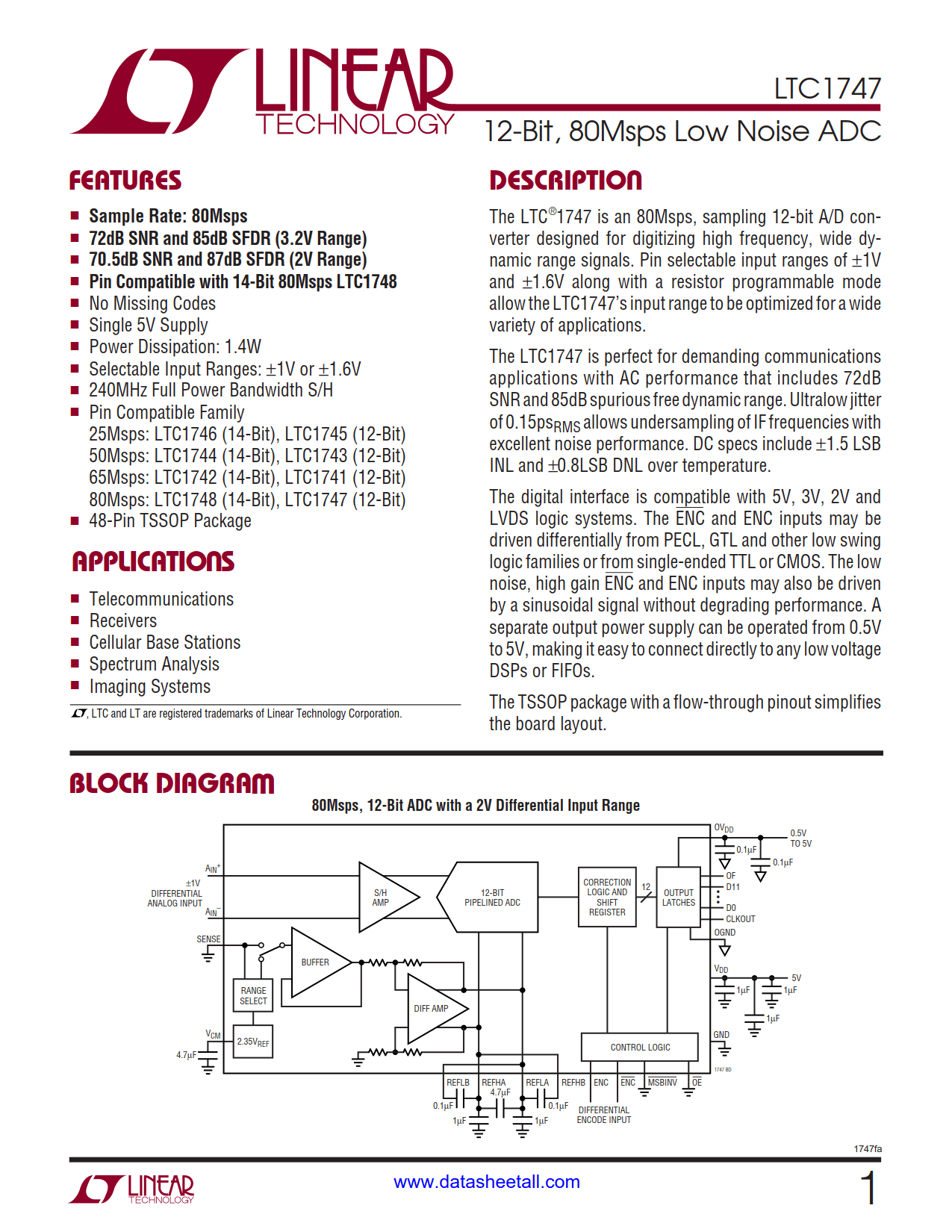
LTC1747 Datasheet
12-Bit, 80Msps Low Noise ADC

12-Bit, 80Msps Low Noise ADC
| Part No. | In Stock | Price | Packaging | SPQ | Marking | MSL | Pins | Temp Range | Package Description |
The LTC1747 is an 80Msps, sampling 12-bit A/D converter designed for digitizing high frequency, wide dynamic range signals. Pin selectable input ranges of ±1V and ±1.6V along with a resistor programmable mode allow the LTC1747’s input range to be optimized for a wide variety of applications.
The LTC1747 is perfect for demanding communications applications with AC performance that includes 72dB SNR and 85dB spurious free dynamic range. Ultralow jitter of 0.15psRMS allows undersampling of IF frequencies with excellent noise performance. DC specs include ±1.5 LSB INL and ±0.8LSB DNL over temperature.
The digital interface is compatible with 5V, 3V, 2V and LVDS logic systems. The ENC and ENC inputs may be driven differentially from PECL, GTL and other low swing logic families or from single-ended TTL or CMOS. The low noise, high gain ENC and ENC inputs may also be driven by a sinusoidal signal without degrading performance. A separate output power supply can be operated from 0.5V to 5V, making it easy to connect directly to any low voltage DSPs or FIFOs.
The TSSOP package with a flow-through pinout simplifies the board layout.